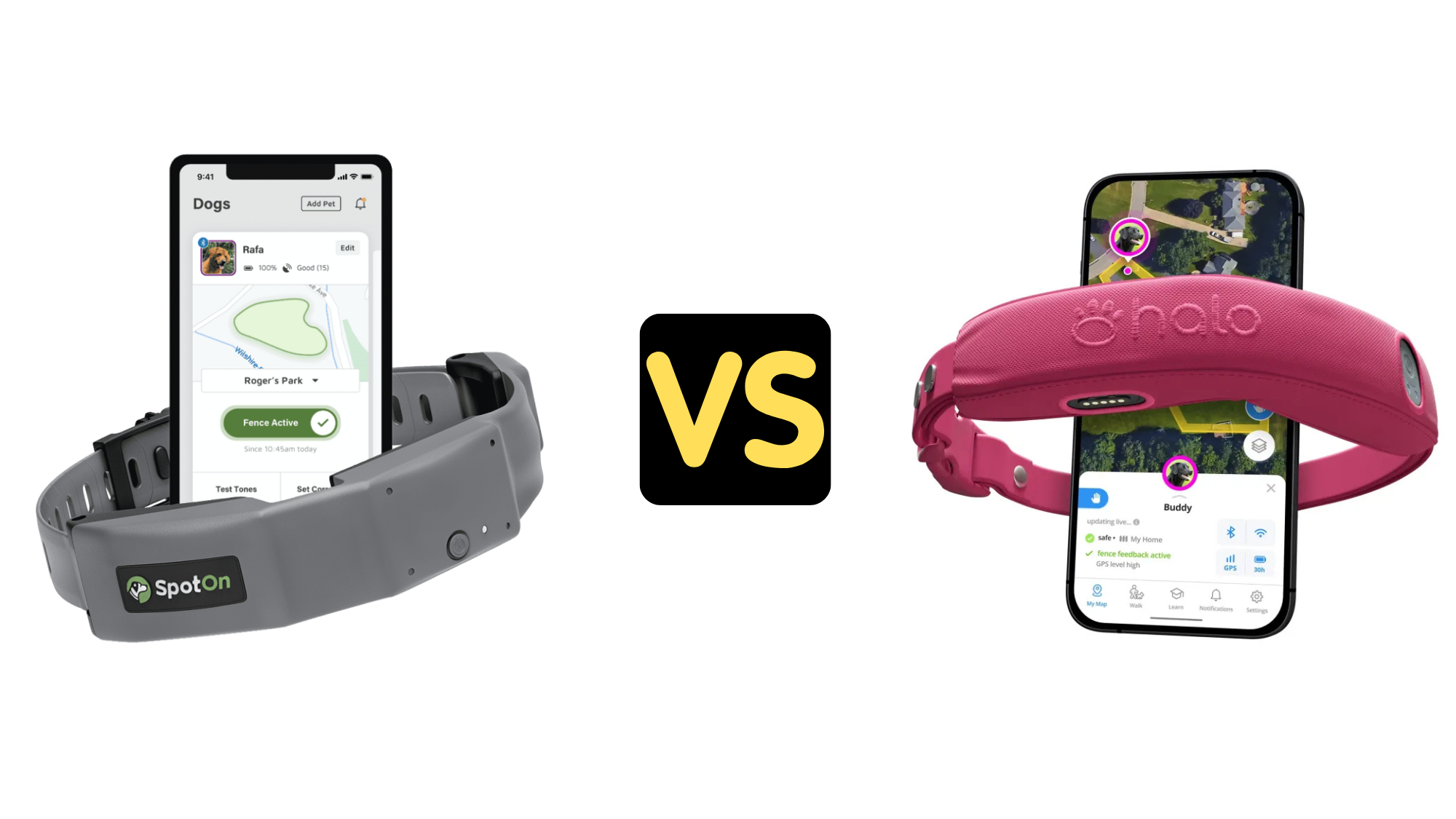| Summary A GPS dog fence is a modern solution for pet containment that eliminates the need for physical barriers like traditional fences or underground wired systems. Instead, these systems use GPS technology to create virtual boundaries that keep your dog within a designated safe zone. |
Among the top GPS-based dog fences, SpotOn vs Halo Dog Fence are two of the most well-known brands. Both offer innovative features, including customizable geofencing, training collars, and activity tracking, making them excellent choices for pet owners who want a flexible and effective containment solution.
However, there are key differences between SpotOn and Halo in terms of accuracy, features, battery life, training modes, and price, which can impact your decision. This in-depth comparison will break down the differences between these two GPS dog fences to help you determine which one is the best fit for your pet and lifestyle. Learn if Dachshunds need special collars to provide the right support and comfort for their unique body shape.
Blog Highlights
ToggleOverview: SpotOn vs Halo Dog Fence
Key Differences at a Glance
Feature Comparisons: SpotOn vs Halo Dog Fence
When comparing SpotOn vs Halo Dog Fence, it’s essential to evaluate their features in detail to determine which one is best suited for your needs. These two GPS-based wireless fences share similarities but also have crucial differences in accuracy, training, durability, coverage, pricing, and overall functionality. Below is a comprehensive breakdown of how they stack up against each other.
1. GPS Accuracy & Boundary Stability
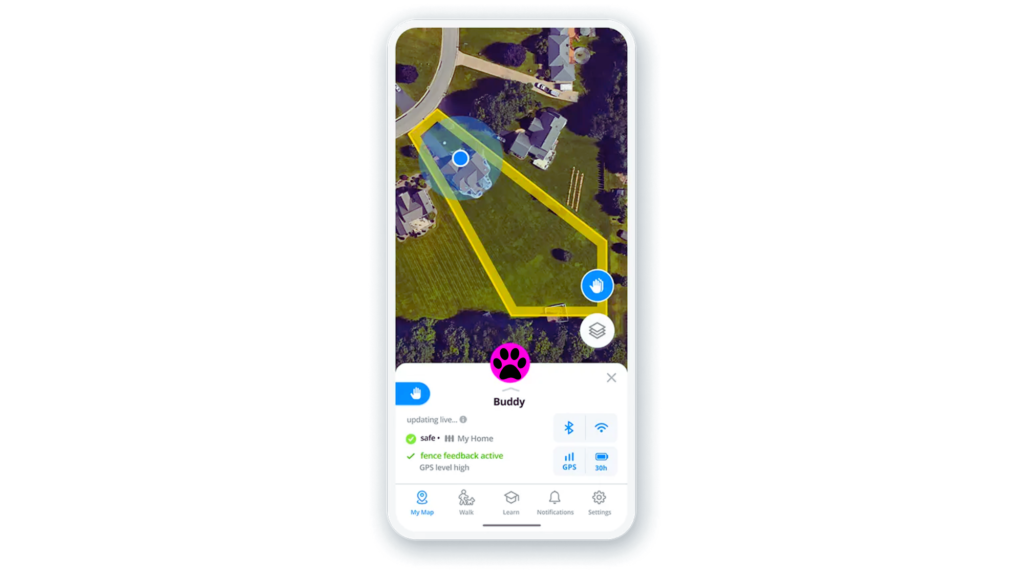
One of the most critical aspects of any wireless fence is GPS accuracy. The more stable and precise the boundaries, the more reliable the fence will be in keeping your dog safe. Discover What’s the ideal collar size for a French Bulldog puppy? to ensure both safety and comfort during their growing stages.
SpotOn Dog Fence stands out in terms of boundary accuracy. It uses multi-constellation GPS technology, which includes signals from GPS, GLONASS, and Galileo satellites. This triple-layer GPS system ensures that the boundaries remain stable and consistent, even in wooded areas, uneven terrain, or locations prone to signal interference. This feature is especially useful for pet owners who live on large properties, farms, or rural areas, where other GPS-based systems might struggle with accuracy.
In contrast, Halo Dog Fence relies on standard GPS tracking. While still effective, it does not offer the same multi-satellite precision as SpotOn. This can sometimes result in boundary drift, where the fence shifts slightly due to GPS signal variations. This is particularly noticeable in areas with tall buildings, heavy tree cover, or poor satellite visibility. While Halo performs well in open spaces, users have reported occasional inconsistencies in boundary placement.
For absolute accuracy and stable boundaries, SpotOn is the superior choice.
2. Setup & Ease of Use
Both SpotOn and Halo Dog Fence are designed for easy setup, but they have key differences in how you create and manage virtual boundaries.
With SpotOn, users create fences by walking the boundary line while carrying the collar. This means you can customize the fence shape to fit irregular landscapes. Whether you need to enclose a backyard, wrap around obstacles, or create multiple fence zones, SpotOn offers full flexibility. Once set, the system remembers multiple locations, so you don’t have to reconfigure it every time you change environments.
Halo Dog Fence, on the other hand, allows users to draw virtual fences on the mobile app rather than walking the perimeter. While this may seem more convenient, it has limitations—especially if your property has complex boundaries or physical barriers. Unlike SpotOn, Halo does not support saving multiple fences, meaning you must reset your fence each time you move locations.
For those who want maximum customization and multi-location fencing, SpotOn wins. If you prefer an app-based setup without walking boundaries, Halo is more convenient.
3. Coverage Area & Flexibility
Coverage area is another key factor, especially for dog owners with large properties.
SpotOn offers an unlimited coverage area, making it ideal for large farms, open fields, or multi-acre landowners. You can create fences up to 1,000 acres, giving dogs plenty of space to roam while staying safe within their boundaries.
Halo, on the other hand, has a maximum coverage of 30 acres, which is still sufficient for most suburban or small rural properties. However, for those with expansive land, Halo may feel restrictive. Understand if French Bulldogs can wear dog collars and how it affects their neck structure and overall health.
For large properties or flexible fencing, SpotOn is the better option.
4. Durability & Collar Design
Durability plays a crucial role in a GPS dog fence collar, especially for active dogs that spend a lot of time outdoors.
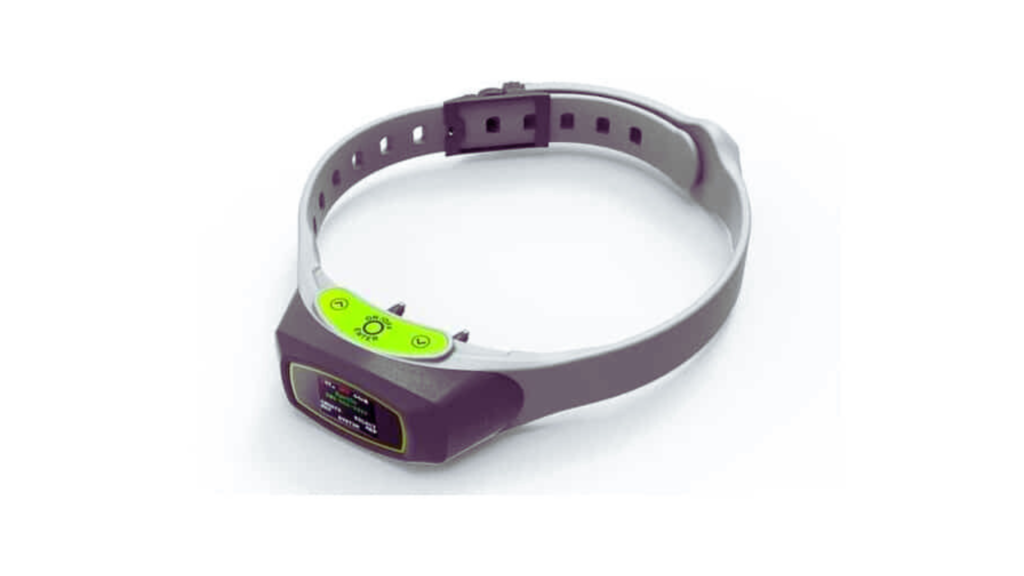
SpotOn’s collar is built with rugged, waterproof materials designed for harsh outdoor conditions. It’s fully waterproof and can withstand rain, mud, and even swimming. The collar’s GPS unit is reinforced, making it less prone to damage from rough play or accidental impacts.
Halo’s collar is also waterproof and durable, but some users have reported that the build quality is not as robust as SpotOn. While it holds up well under regular outdoor activities, it may not be as impact-resistant for dogs that tend to be rough on their gear.
If durability is a top priority, SpotOn offers better long-term performance.
5. Training Features & Correction Methods
Proper training is essential for teaching dogs to respect virtual fences, and both SpotOn and Halo offer correction features.
SpotOn provides three types of correction signals:
- Audible tone – A warning beep alerts the dog before reaching the boundary.
- Vibration – A gentle vibration reinforces the boundary if the dog ignores the tone.
- Static correction – An optional static correction can be used for added reinforcement.
Halo includes the same tone, vibration, and static correction options, but what sets it apart is its integrated training program by Cesar Millan. Halo offers step-by-step guidance on how to train your dog to recognize and respect the virtual fence, making it an excellent option for first-time dog owners or those needing structured training.
For built-in training guidance, Halo is better. For customized correction settings without a forced training program, SpotOn is ideal.
6. Battery Life & Charging Time
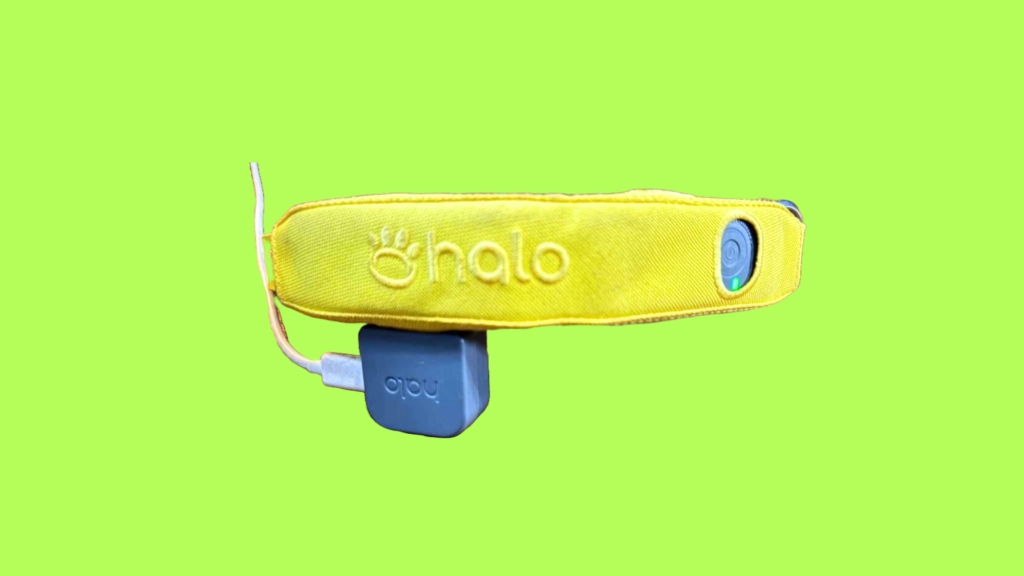
Battery life is a crucial factor, especially for long outdoor sessions or overnight containment.
SpotOn offers a battery life of 18-24 hours, meaning you can go a full day before needing to recharge. This is especially useful for dogs that spend extended time outdoors. Charging takes about 1-2 hours, making it convenient for daily use.
Halo’s battery life is 12-14 hours, which is shorter than SpotOn. While it still lasts a full day, it may require more frequent recharging, especially if your dog is outside for long periods.
For longer battery life, SpotOn is the winner.
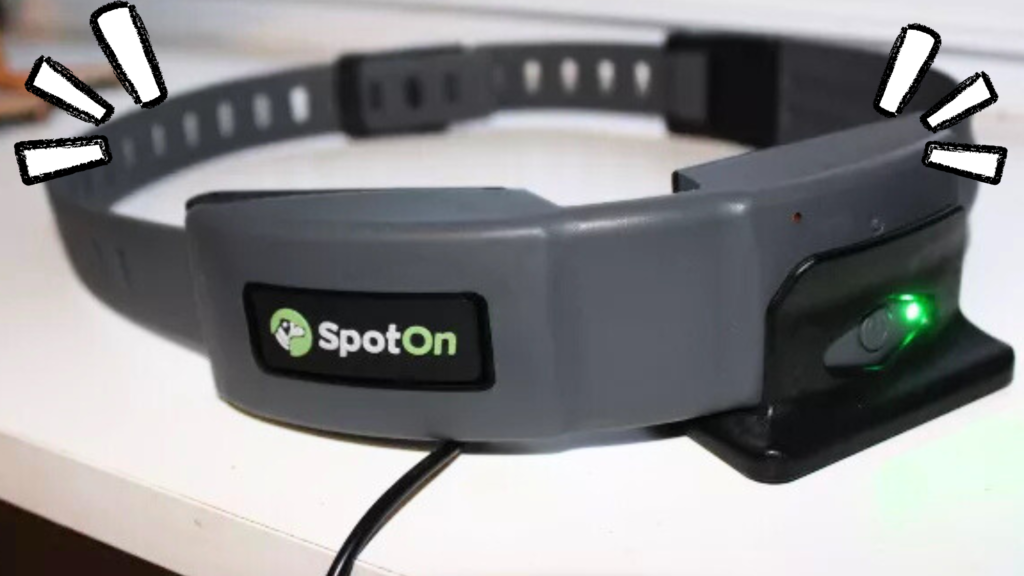
7. Subscription Costs & Pricing
One of the biggest differences between SpotOn and Halo is their pricing structure.
- SpotOn requires a one-time purchase of $1,295, and its basic fence features work without a subscription. However, if you want real-time tracking and escape alerts, you’ll need a paid plan starting at $5.95/month.
- Halo costs $699, making it more affordable upfront, but it requires a mandatory subscription for full functionality. Plans range from $4.49 to $29.99 per month, depending on the features you want.
While Halo is cheaper initially, SpotOn may be more cost-effective in the long run since it does not force users into a monthly subscription.
8. Real-Time Tracking & Escape Alerts
Real-time tracking is essential for owners who want to monitor their dog’s movements and receive escape alerts.
SpotOn offers real-time GPS tracking and instant notifications if your dog breaches the boundary, but this requires a paid subscription.
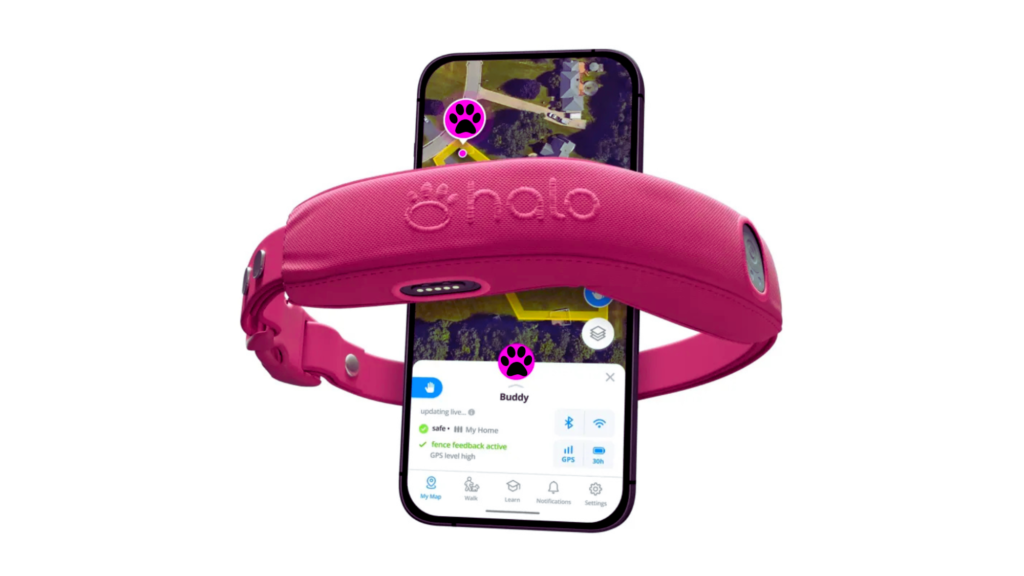
Halo also provides live tracking and escape alerts, but you must have an active monthly plan to access them.
Both systems offer strong tracking features, but SpotOn’s ability to work independently without a subscription makes it the better value. Explore the Top dog collars for French Bulldogs to keep them comfortable while ensuring durability and style.
FAQs for SpotOn vs Halo Dog Fence
1. Which is better: SpotOn or Halo Dog Fence?
Both SpotOn and Halo Dog Fence are great options, but the right choice depends on your needs. SpotOn offers superior GPS accuracy, customizable boundary shapes, and no required subscription, making it ideal for large properties and rural areas. Halo is more budget-friendly and includes Cesar Millan’s training program, making it a good choice for smaller yards and general pet training.
2. Does SpotOn or Halo require a subscription?
- SpotOn: No mandatory subscription. However, advanced GPS tracking features require a paid plan.
- Halo: Requires a monthly subscription ($5-$30) to unlock full functionality, including advanced training, GPS tracking, and boundary adjustments.
3. Can SpotOn and Halo work without Wi-Fi or cellular data?
- SpotOn: Yes! Works anywhere with a GPS signal, making it great for remote locations, farms, and large properties.
- Halo: Requires cellular or Wi-Fi connectivity for full functionality, meaning it may not work as reliably in rural or wooded areas.
4. How accurate are the boundaries for SpotOn and Halo?
- SpotOn: Uses multi-constellation GPS technology (GPS, GLONASS, Galileo) for highly accurate and stable virtual fences.
- Halo: GPS accuracy is decent but more prone to drifting, especially in areas with trees, buildings, or weak signals.
5. Which fence is better for training my dog?
- SpotOn: Provides customizable correction levels (tone, vibration, and static stimulation) but requires self-training.
- Halo: Includes Cesar Millan’s professional training program, which is a great bonus for owners who need structured guidance.
6. How long do the batteries last?
- SpotOn: 18-24 hours per charge, making it more suitable for long outdoor activities.
- Halo: 12-14 hours per charge, which may require more frequent charging for active dogs.
7. Is the SpotOn or Halo Dog Fence better for traveling?
- SpotOn: Highly portable, can save multiple fences, and works anywhere with GPS—perfect for traveling.
- Halo: Also portable but requires reconfiguring the fence manually and depends on Wi-Fi or cellular coverage in new locations.
Final Verdict: Which One Should You Choose?
Choose SpotOn GPS Fence if:
✔ You need precise GPS tracking and custom-shaped boundaries
✔ You have a large property or multiple containment areas
✔ You want long battery life and portability
Choose Halo Dog Fence if:
✔ You want a budget-friendly alternative
✔ You prefer built-in Cesar Millan training features
✔ You have a small to medium yard and good internet coverageBoth SpotOn vs Halo Dog Fence are excellent choices, but the right one depends on your dog’s needs, property size, and budget. If you prioritize accuracy, reliability, and long-term savings, SpotOn is the best option. If you need an affordable, easy-to-use GPS fence with built-in training, Halo is a solid choice. Find the Top dog collars for Dachshunds that accommodate their long bodies and prevent strain on their necks.

